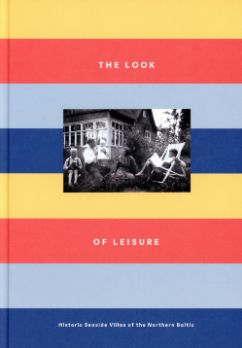Summer villas became a special phenomenon on the Karelian Isthmus during the 1870s, when the railway created a new connection between the Finnish Grand Duchy and and St. Petersburg, the capital of Imperial Russia. The coastal stretch of the Isthmus northwest of St. Petersburg developed into a meeting point between two cultures, as thousands of summer vacationers found the area. Still in the present day, this “Northern Riviera” holds an aura of a glorious “Paradise Lost” of endless summer days and long beaches, populated with beautiful villas and picturesque villages. The area of Terijoki, today Zelenogorsk, became the most famous summer resort. This publication, a joint venture of Finnish and Russian authors, explores the rich history of wooden coastal villas. Architecturally these buildings allowed great freedom in design, and came to symbolise summer time leisure. A range of essays introduce perspectives on history, the stylistic exchanges and variations, as well as documenting and restoration of the villas. In addition to history, the work at hand offers insights to the contemporary questions concerning the future of this shared heritage.













